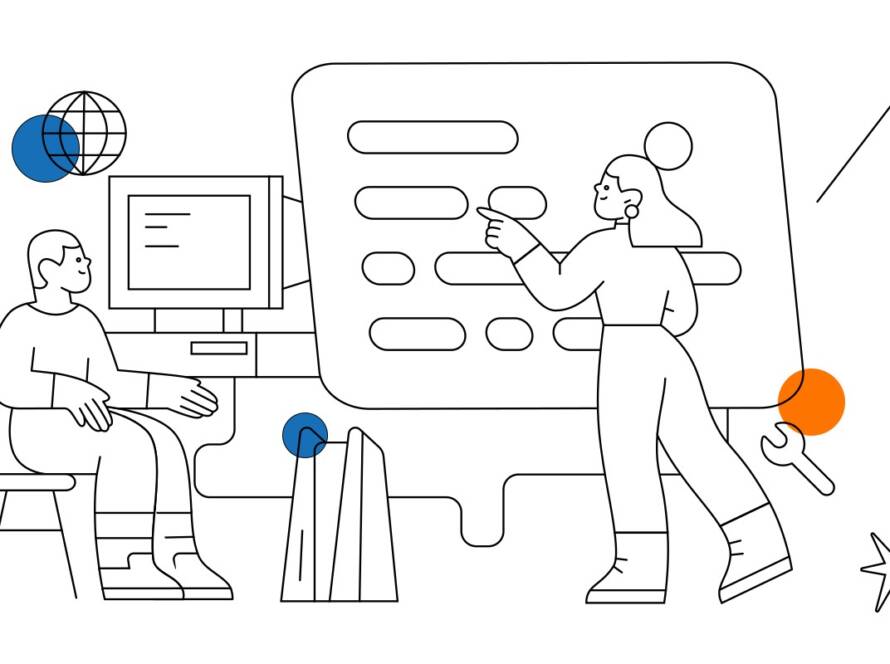As a technically inclined individual, you are likely aware of the exponential increase in data generation and the pressing need for scalable and efficient solutions to manage, store, and analyze this data. Amazon Web Services (AWS) has two cloud-based database solutions, Amazon RDS and Redshift, designed to meet the diverse and complex needs of your application.
However, both services possess distinct features and benefits, and selecting the appropriate database solution is critical for the seamless and effective operation of your application. This article offers an in-depth comparison of Amazon RDS vs. Redshift, highlighting the critical differences and factors to consider when choosing the optimal database solution for your technical requirements.
“Choosing the right database solution can make or break your business”
Amazon RDS: Key Features
Amazon RDS (Relational Database Service) is a cloud-based database service that makes it easy to set up, operate, and scale a relational database in the cloud. Here are some of the key features of Amazon RDS:
- Easy to Setup and Manage

One of the key features of Amazon RDS is its ease of use when it comes to setting up and managing a relational database in the cloud. The service streamlines the process, making it straightforward for users to create a new database instance, configure parameters, and set up automatic backups with just a few clicks. By simplifying the setup and management of databases, Amazon RDS allows users to focus on other aspects of their business.
- Support for Multiple Database Engines
Instead of being limited to a single option, Amazon RDS supports multiple popular database engines. This flexibility allows organizations to select the engine that best meets their needs. MySQL, PostgreSQL, Oracle, SQL Server, and MariaDB are among the database engines supported by Amazon RDS. This variety allows customers to choose the engine that is best suited to their application, making it easier to manage and optimize their data in the cloud.
“With automatic backups and point-in-time recovery, users can have peace of mind knowing that their data is protected and easily recoverable in case of a disaster!”
- Automatic Backups with Point-In-Time Recovery
Amazon RDS offers automatic backups with point-in-time recovery as a key feature. This means that the service automatically backs up data and stores it in Amazon S3, providing users with an easy way to restore their database to any point in time within their retention period. This feature can help businesses recover from data loss due to human error, system failures, or other unforeseen events. With automatic backups and point-in-time recovery, users can have peace of mind knowing that their data is protected and easily recoverable in case of a disaster.
- Security and Compliance
Amazon RDS prioritizes security and compliance. To maintain the security of user data, the service includes network isolation via Amazon VPC, encryption at rest using AWS KMS, and automated software patching to keep databases up-to-date and secure. Furthermore, Amazon RDS complies with a variety of industry standards, including HIPAA, SOC, and PCI, which is critical for enterprises that must fulfill specific legal criteria. These security and compliance procedures aid in keeping user data safe and secure while it is managed in the cloud.
Amazon Redshift: Key Features
Amazon Redshift is a data warehousing solution in the cloud that can handle large-scale analytics workloads. It is a fully managed data warehouse that is quick, scalable, and cost-effective, allowing businesses to efficiently store and analyze enormous amounts of data. Here are some of the key features of Amazon Redshift:
- High Performance and Scalability

As Amazon Redshift is designed to handle large-scale data analytics workloads, it is a popular solution for enterprises dealing with massive amounts of data. It meets the challenges of big data processing with excellent performance and scalability. Businesses may use Amazon Redshift to increase computation and storage resources as needed to manage even the largest data volumes. It also provides fast query performance, especially when working with petabyte-scale data, allowing them to gain insights from their data faster.
- Integration with other AWS Services
Another feature of Amazon Redshift is that it interfaces smoothly with a number of other AWS services, enabling seamless data transmission across services and end-to-end data pipeline construction. It can interact with Amazon S3 for direct data loading, AWS Glue for ETL processes, AWS Lambda for serverless functions, and Amazon Quick Sight for data visualization. This integration makes it easier for enterprises to create and automate complex analytics operations.
- Advanced Analytics Capabilities
Machine learning, data warehousing, and data lake integration are among the advanced analytics features provided by Amazon Redshift. Users can construct models directly in Redshift using machine learning, while data warehousing enables cost-effective and scalable data analysis. Redshift also interfaces smoothly with Amazon S3 for easy data querying.
Amazon RDS vs. Redshift: Wondering which cloud-based database solution is right for you?”
RDS vs. Redshift: Comparison and Choosing the Best for Your Application Needs
- RDS vs. Redshift: Performance
Amazon Redshift is designed for high-performance analytics workloads and can handle complex queries on large datasets. Amazon RDS is optimized for transactional workloads and is not designed for complex analytics queries.
- Redshift vs. RDS: Storage Capacity
Amazon Redshift offers petabyte-scale data warehousing and can store and analyze large amounts of data. Amazon RDS offers scalable database storage, but the maximum storage capacity is limited to 64 TB per database. Redshift may be a better alternative if you have significant amounts of structured data that require complicated analytics. RDS may be a better option if you have smaller amounts of organized or unstructured data.
- RDS vs. Redshift: Scaling
Amazon Redshift allows for automatic scaling and can handle large-scale workloads. Amazon RDS also allows for automatic scaling but may not be able to handle as large of a workload as Redshift. RDS is geared for transactional workloads, whereas Redshift is optimized for quick, large-scale analytics applications. RDS may be the preferable solution if your application demands real-time data processing.
- Redshift vs. RDS: Maintenance
 Amazon Redshift is a fully managed service, which means that Amazon handles routine maintenance tasks, such as patching and software upgrades. Amazon RDS is also a managed service, but users are responsible for managing the underlying operating system.
Amazon Redshift is a fully managed service, which means that Amazon handles routine maintenance tasks, such as patching and software upgrades. Amazon RDS is also a managed service, but users are responsible for managing the underlying operating system.
- RDS vs. Redshift: Security
Both Amazon Redshift and Amazon RDS offer built-in security features, such as encryption and secure access controls. However, Redshift is designed for high-security workloads and offers more advanced security features, such as VPC integration and IAM authentication.
Examples of Applications: RDS vs. Redshift
RDS
eCommerce websites, content management systems, and financial applications that require transactional processing. Below are examples of applications that benefit from Amazon RDS.
- Low to Medium Storage Needs
Amazon RDS is best suited for applications that do not require large amounts of storage.
- Online Transaction Processing (OLTP)
RDS is designed for OLTP workloads where data is frequently read and written to the database.
- Relational Database Management System (RDBMS)
RDS supports several RDBMS engines, including MySQL, PostgreSQL, Oracle, SQL Server, and MariaDB.
- Fast Deployment
RDS is easy to set up and configure, allowing for quick deployment of applications.
- Flexibility
RDS offers a variety of instance types and scaling options, making it flexible for changing workload demands.
- Easy Maintenance
With Amazon RDS, AWS manages database backups, software updates, and security patching, reducing the burden of database maintenance on application developers.
Redshift
Redshift is better suited for applications that require heavy data analysis, querying large datasets, and performing complex data manipulations. Some examples of applications that are better suited for Redshift are:
- Business intelligence (BI) and Reporting Tools
Redshift is ideal for BI and reporting tools that require fast query response times and the ability to handle large volumes of data.
- Data Warehousing
Redshift is specifically designed for data warehousing applications that require large storage capacities and high scalability.
- Data Analytics
Redshift is a popular choice for data analytics applications that require processing large amounts of data to gain valuable insights and make data-driven decisions.
- IoT Data Processing
IoT (Internet of Things) applications generate a massive amount of data, and Redshift is an excellent choice for processing and analyzing this data in real time. Ultimately, the ideal choice between Amazon RDS and Redshift for you will be determined by your individual requirements and use case. To identify the best fit for your organization, keep in view the considerations listed above and consult with a database professional such as Exper Labs who can integrate, analyze, and leverage your data to drive success to your application.
Final Words
In conclusion, selecting the finest database system for your company necessitates a thorough analysis of your individual objectives and expectations. While both Amazon RDS and Redshift provide cloud-based database solutions, they are intended for various use cases and have unique features and capabilities.
At Exper Labs, we offer Amazon Redshift as one of our data warehousing solutions to assist startups and enterprises in integrating, aggregating, and analyzing their raw data. We have experience in setting up data pipelines utilizing Amazon Redshift to provide scalable and cost-effective solutions for data warehousing and analytics. Contact us today to learn more about how we can help you integrate, analyze, and leverage your data to drive success for your application.



